Advertisements
Advertisements
प्रश्न
In the given figure, DE = IH, EG = FI and ∠E = ∠I. Is ∆DEF ≅ ∆HIG? If yes, by which congruence criterion?
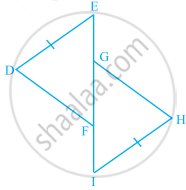
उत्तर
Given, EG = FI
EG + GF = FI + GF ......[Adding GF on both sides]
EF = IG
In ΔDEF and ΔHIG,
DE = IH ......[Given]
EF = IG ......[Proved above]
∠E = ∠I ......[Given]
By SAS congruence criterion, ΔDEF ≅ ΔHIG
APPEARS IN
संबंधित प्रश्न
Consider the given pairs of triangles and say whether each pair is that of congruent triangles. If the triangles are congruent, say ‘how’; if they are not congruent say ‘why’ and also say if a small modification would make them congruent: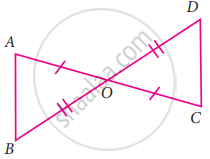
To conclude the congruency of triangles, mark the required information in the following figure with reference to the given congruency criterion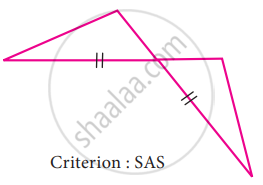
For the given pair of triangles state the criterion that can be used to determine the congruency?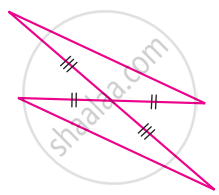
Construct a triangle ABC with given conditions.
AB = 7 cm, AC = 6.5 cm and ∠A = 120°
Construct a triangle PQR with given conditions.
∠P = 60°, ∠R = 35° and PR = 7.8 cm
In the given figure, ΔPQR ≅ Δ ______.
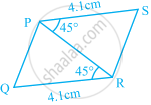
In the given figure, which pairs of triangles are congruent by SAS congruence criterion (condition)? if congruent, write the congruence of the two triangles in symbolic form.

In the given figure, which pairs of triangles are congruent by SAS congruence criterion (condition)? if congruent, write the congruence of the two triangles in symbolic form.
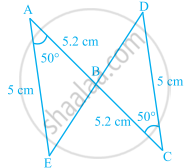
In the given figure, which pairs of triangles are congruent by SAS congruence criterion (condition)? if congruent, write the congruence of the two triangles in symbolic form.

State which of the following pairs of triangles are congruent. If yes, write them in symbolic form (you may draw a rough figure).
∆PQR: PQ = 3.5 cm, QR = 4.0 cm, ∠Q = 60°
∆STU: ST = 3.5 cm, TU = 4 cm, ∠T = 60°
